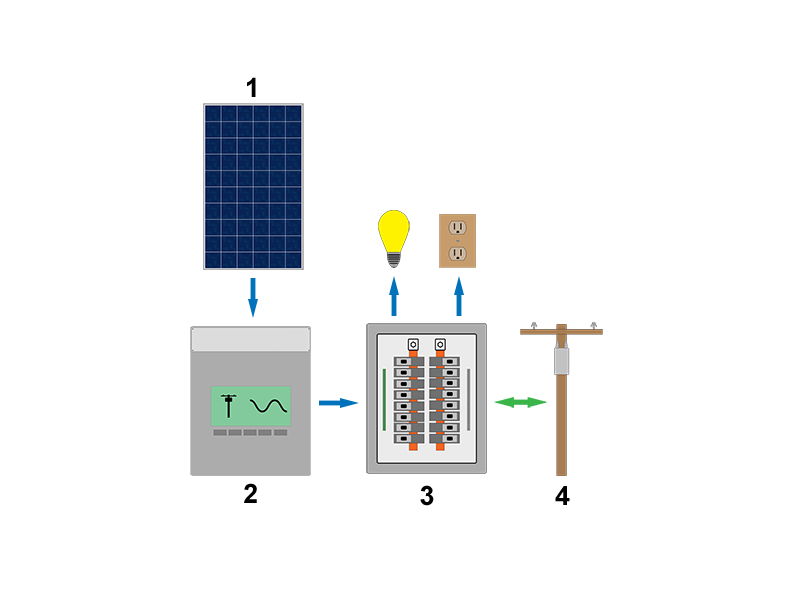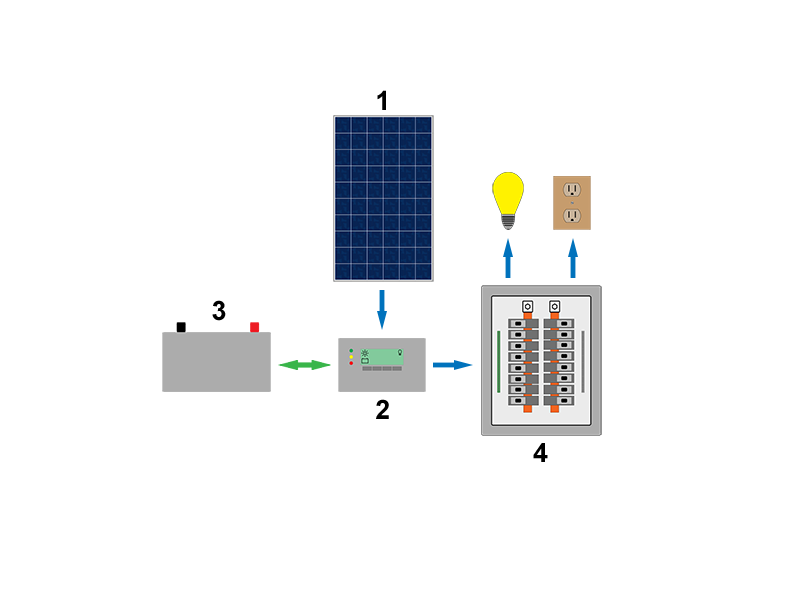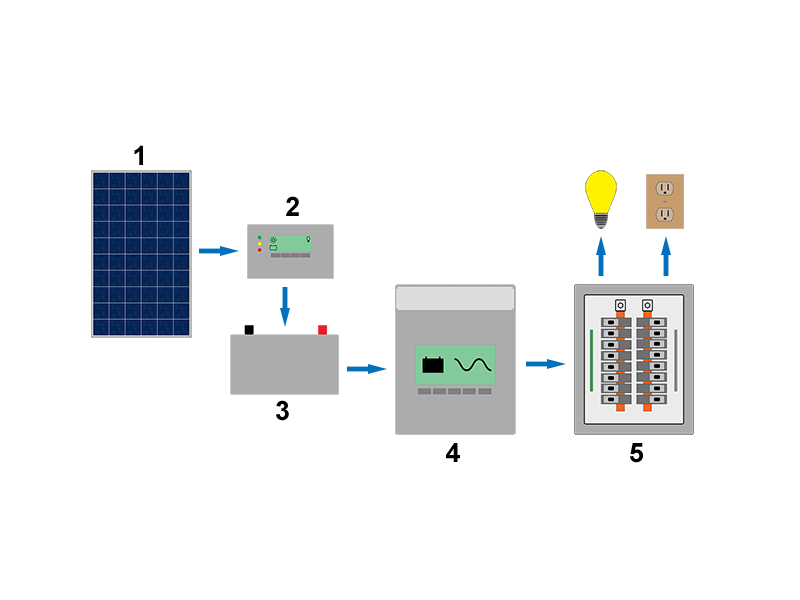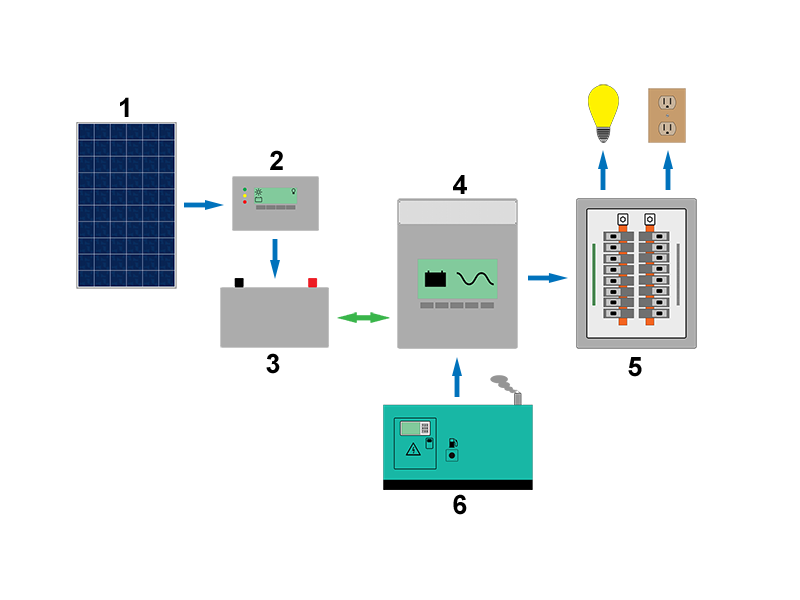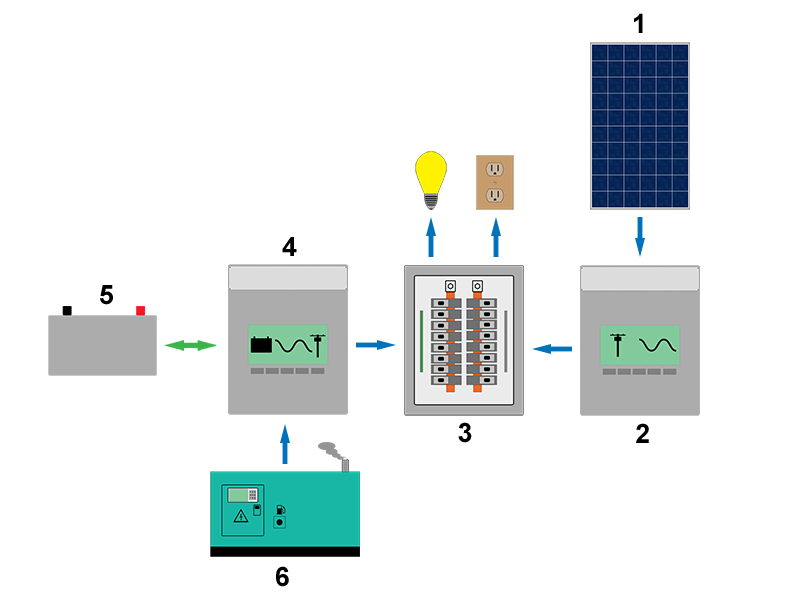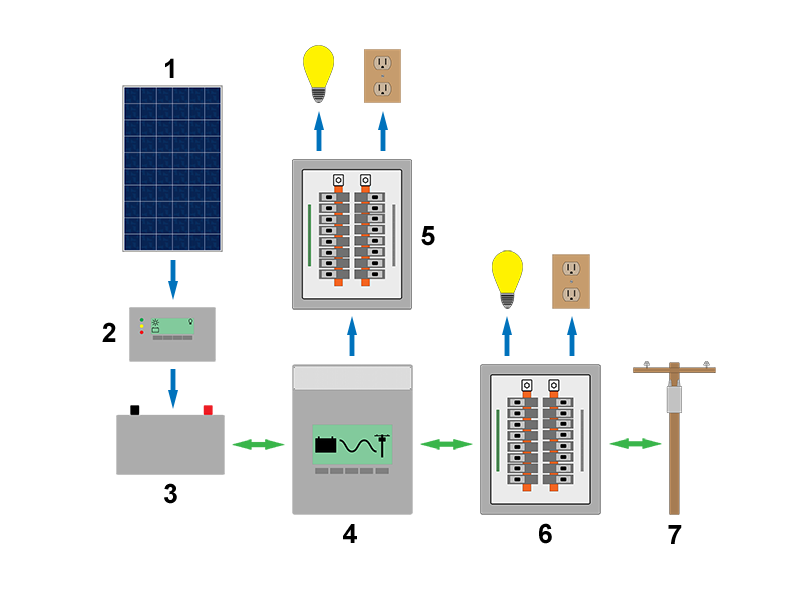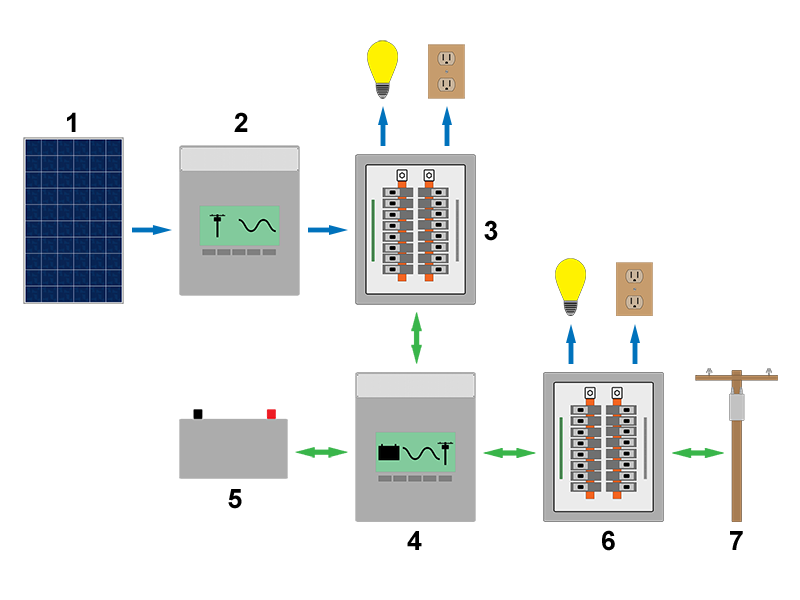Difference between revisions of "PV system types"
Jump to navigation
Jump to search
| Line 1: | Line 1: | ||
[[Category:Basics]] | [[Category:Basics]] | ||
== Grid-tied PV systems == | == Grid-tied PV systems == | ||
| − | + | PV systems installed that have a grid connection are called grid-tied systems. The inverters that come with these types of systems are called ''interative'' as they are capable of interacting with the grid by matching its voltage and frequency. As a system of this type produces energy, it must either be consumed on the presmises or it will be fed back into the grid - through a meter - to be used by other customers. These systems cannot store energy and do not provide backup power in the case of a power outage. The majority of PV systems installed globally are of this type. | |
| − | [[File:Gridtied - | + | [[File:Gridtied - 200922.png|frame|center|Grid-tied system with an inveractive inverter. Components in this image: '''1.''' Solar module/array '''2.''' Grid-tied interactive inverter '''3.''' Distribution panel to feed loads '''4.''' Grid connection]] |
== Stand-alone systems == | == Stand-alone systems == | ||
Revision as of 23:09, 22 September 2020
Grid-tied PV systems
PV systems installed that have a grid connection are called grid-tied systems. The inverters that come with these types of systems are called interative as they are capable of interacting with the grid by matching its voltage and frequency. As a system of this type produces energy, it must either be consumed on the presmises or it will be fed back into the grid - through a meter - to be used by other customers. These systems cannot store energy and do not provide backup power in the case of a power outage. The majority of PV systems installed globally are of this type.
